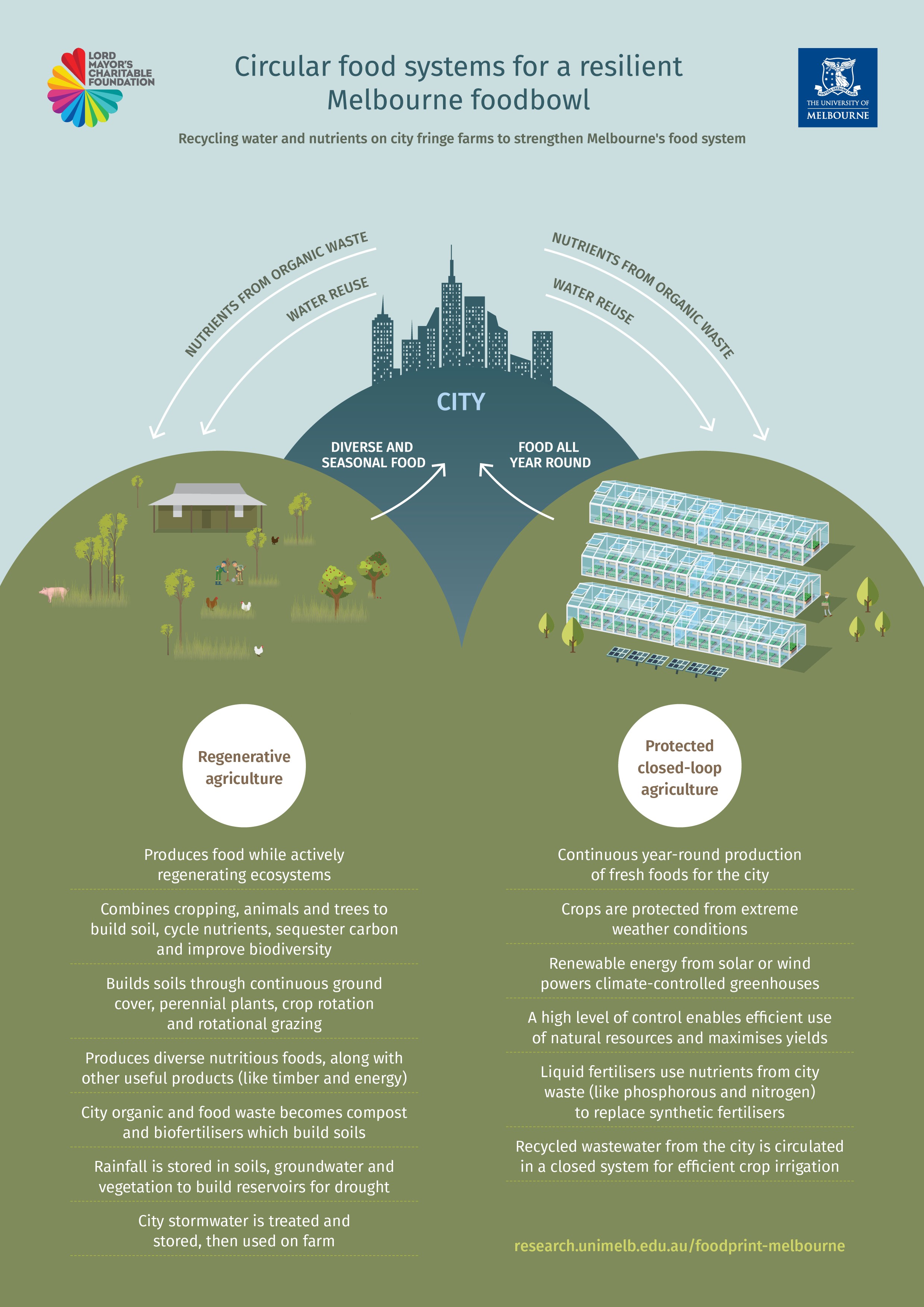Infographic: Circular food systems for a resilient Melbourne foodbowl
This infographic shows how recycling water and nutrients on city fringe farms can strengthen Melbourne's food system.
There is now an international consensus that agriculture needs to shift to more sustainable approaches that strengthen rather than degrade natural ecosystems and that operate within planetary boundaries (including boundaries related to climate change).
Different approaches to sustainable farming offer different potential benefits. For example, regenerative agriculture focuses particularly on building soils and regenerating natural ecosystems through mixed farming (animals, cropping and trees), while protected agriculture focuses on resilience to climate extremes and efficient use of natural resources through a high degree of control (e.g. in controlled-environment glasshouses). A diverse range of approaches to sustainable farming should be promoted in Melbourne’s foodbowl, rather than one ‘best’ approach, as a diversity of approaches is likely to increase the overall resilience of the city’s food system.

An important aspect of sustainable farming approaches is resilience to climate-related shocks and stresses, such as droughts, heatwaves, storms and floods. Farming close to cities can draw on city waste streams (particularly water and organic waste) to increase its resilience to water scarcity in a warming climate and to declining supplies of the natural resources that underpin synthetic fertilisers. The sustainable farming approaches promoted in Melbourne’s foodbowl should focus particularly on recycling city waste streams on farm for efficient use of valuable resources.
Sign up for the Foodprint Melbourne newsletter for project updates